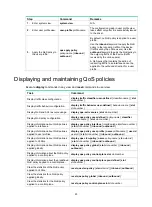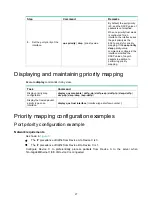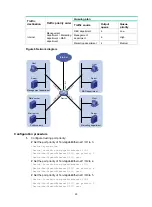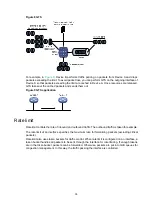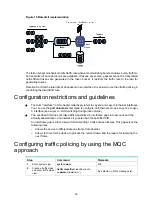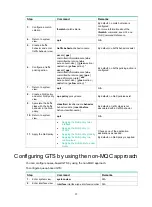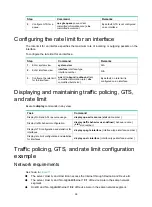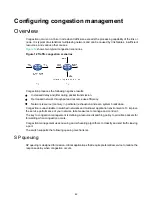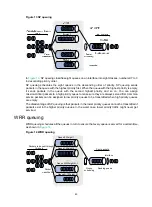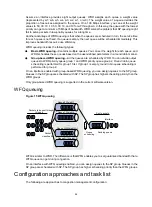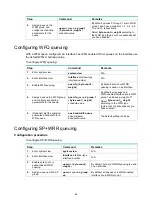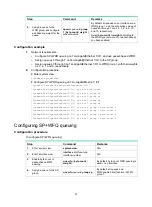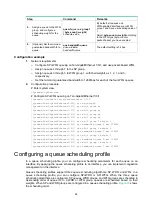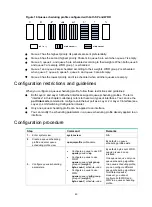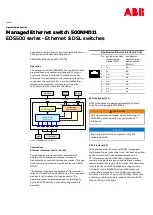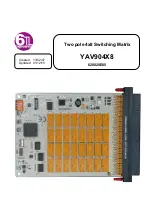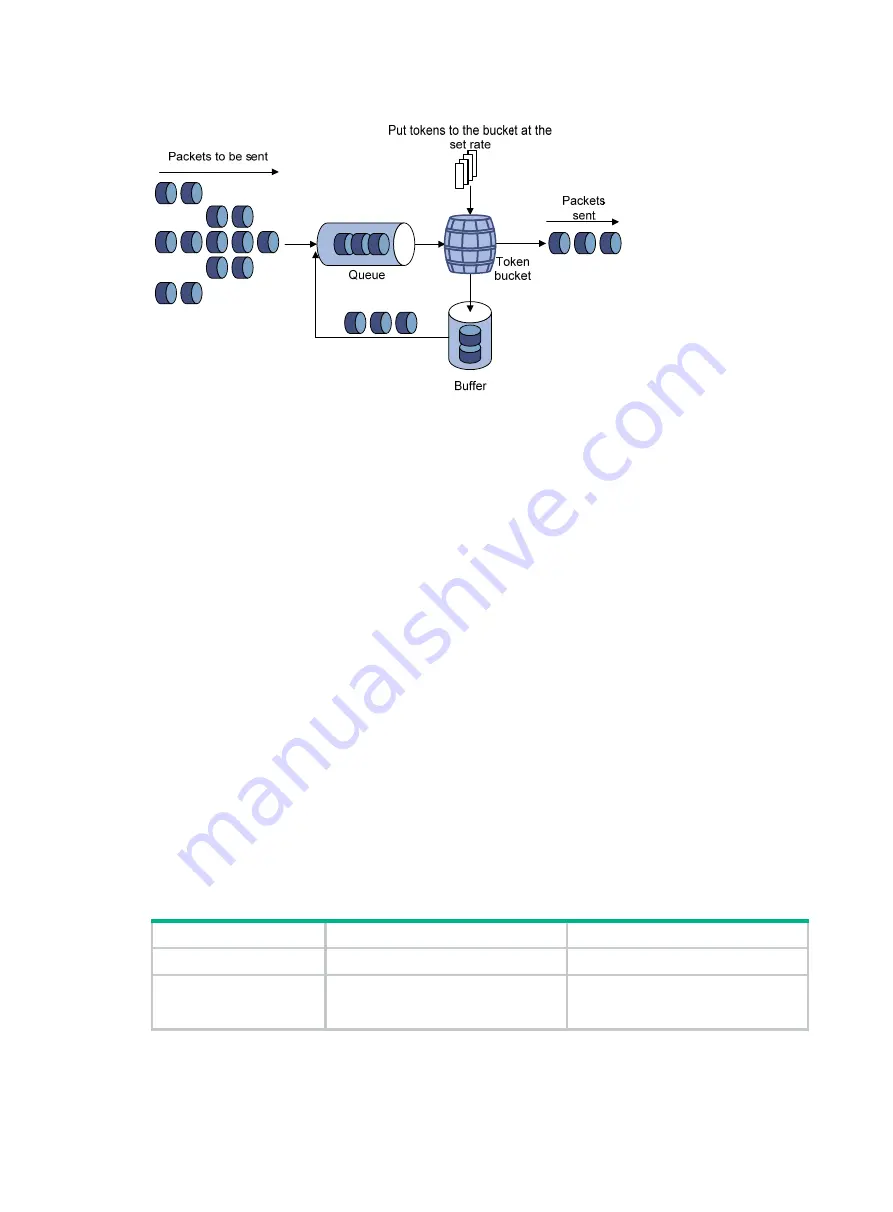
36
Figure 10 Rate limit implementation
The token bucket mechanism limits traffic rate when accommodating bursts. It allows bursty traffic to
be transmitted if enough tokens are available. If tokens are scarce, packets cannot be transmitted
until efficient tokens are generated in the token bucket. It restricts the traffic rate to the rate for
generating tokens.
Rate limit controls the total rate of all packets on an interface. It is easier to use than traffic policing in
controlling the total traffic rate.
Configuration restrictions and guidelines
•
The term "interface" in this chapter collectively refers to Layer 2 and Layer 3 Ethernet interfaces.
You can use the
port link-mode
command to configure an Ethernet port as a Layer 2 or Layer
3 interface (see
Layer 2—LAN Switching Configuration Guide
).
•
The specified CIR does not take traffic transmitted in interframe gaps into account, and the
actually allowed rate on an interface is greater than the specified CIR.
An interframe gap is a time interval for transmitting 12 bits between frames. This gap serves the
following roles:
{
Allows the device to differentiate one frame from another.
{
Allows for time for the device to process the current frame and to prepare for receiving the
next frame.
Configuring traffic policing by using the MQC
approach
Step Command
Remarks
1.
Enter system view.
system-view
N/A
2.
Create a traffic class
and enter traffic class
view.
traffic classifier
classifier-name
[
operator
{
and
|
or
} ]
By default, no traffic classes exist.
Summary of Contents for FlexFabric 5940 Series
Page 23: ...17 Figure 3 QoS processing flow ...
Page 84: ...78 Figure 26 MPLS label structure ...
Page 91: ...85 Switch burst mode enable ...


